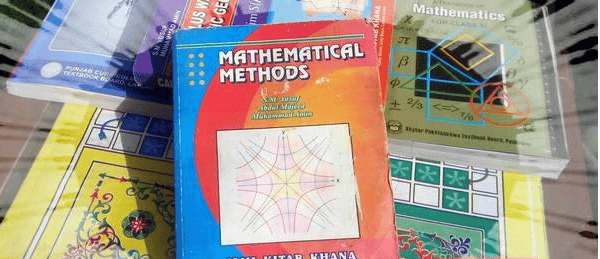2nd Year Maths Book – Complete Guide, Notes, and Download (2025)

Introduction
Mathematics is one of the most important and logical subjects in the intermediate level of education. The 2nd Year Maths Book holds a special place for students of FSc Pre-Engineering, ICS, and 12th grade across Pakistan. It builds upon the foundation of first-year mathematics and introduces more advanced concepts such as calculus, vectors, integration, and conic sections.
The book is prescribed by various educational boards, including the Punjab Textbook Board (PTB), Sindh Board, Federal Board (FBISE), and others. Understanding the 2nd Year Maths Book is crucial not only for scoring well in board exams but also for developing analytical skills necessary for higher studies in engineering, computer science, and physical sciences.
📗 Overview of the 2nd Year Maths Book
The 2nd Year Maths Book is divided into 14 chapters, each covering a unique area of mathematics. Every chapter contains theoretical explanations, examples, and exercises designed to strengthen conceptual understanding and problem-solving ability.
List of Chapters:
- Functions and Limits
- Differentiation
- Integration
- Introduction to Analytical Geometry
- Linear Inequalities
- Linear Programming
- Vectors
- Probability
- Matrices and Determinants
- Trigonometric Functions and Identities
- Sequences and Series
- Partial Fractions
- Complex Numbers
- Application of Derivatives
Each chapter includes solved examples followed by unsolved exercises for practice. These chapters gradually move from simple to complex concepts, ensuring that students develop a clear understanding at every step.
🎯 Importance of the 2nd Year Maths Book
Mathematics is not just about memorizing formulas; it’s about understanding the logic behind every rule. The 2nd Year Maths Book encourages students to think critically and solve problems through reasoning.
Key Benefits:
- Conceptual Clarity: Every chapter explains fundamental concepts before introducing problem sets.
- Exam Preparation: It follows the latest syllabus and pattern used by all major boards in Pakistan.
- Foundation for Entry Tests: Topics like derivatives, limits, and vectors are heavily tested in ECAT and other engineering entry exams.
- Skill Development: Enhances logical thinking, analytical reasoning, and precision.
By mastering this book, students can confidently tackle any question in their board exams and perform well in university admission tests.
🧩 Chapter-Wise Explanation and Tips
1. Functions and Limits
This chapter introduces the basic idea of functions, domain, range, and limits — the foundation of calculus. Practice graphs and examples regularly to understand continuity and behavior of functions.
2. Differentiation and 3. Integration
These two chapters are the heart of calculus. Differentiation helps in finding rates of change, while integration focuses on finding areas and accumulated quantities. Make sure to memorize standard formulas and understand the relationship between these two concepts.
4. Analytical Geometry
Here, students learn about straight lines, circles, and conic sections. It combines algebra and geometry — making it both challenging and interesting.
5. Linear Inequalities and 6. Linear Programming
These topics are essential for optimization problems. Graphical methods and inequality solving techniques are useful in both academics and real-world scenarios.
7. Vectors
Vectors are crucial for physics and engineering. Focus on vector addition, dot product, and cross product to build strong mathematical reasoning.
8. Probability
Probability introduces the concept of chance and data prediction. Students learn to calculate outcomes, permutations, and combinations.
📘 Study Tips for Scoring High Marks
- Understand, Don’t Memorize: Learn the logic behind formulas instead of rote learning.
- Practice Daily: Solve at least one exercise from each chapter regularly.
- Use Past Papers: Analyze board papers to understand the marking pattern.
- Group Study: Discuss difficult questions with classmates or teachers.
- Highlight Key Formulas: Keep a formula sheet for quick revision before exams.
Consistency and smart study can help you achieve full marks in the mathematics paper.
💡 Additional Resources
To make learning easier, many educational websites and YouTube channels provide video lectures, solved exercises, and PDF notes for the 2nd Year Maths Book. You can also find chapter-wise notes for quick revisions and summaries.
Some trusted sources include:
- Punjab Textbook Board official website
- Federal Board official resources
- Reliable educational portals like BeEducated.pk, ilmkidunya.com, and Majeed Academy
These resources offer free downloadable PDFs, updated notes, and short questions with answers according to the latest syllabus.
📥 Download the 2nd Year Maths Book PDF (2025 Edition)
Students can easily download the 2nd Year Maths Book PDF from the official board websites. Always make sure to use the latest 2025 version to match your updated syllabus. Avoid relying on outdated editions, as topics and question patterns may change slightly each year.
To download:
- Visit the Punjab Textbook Board Website
- Navigate to “Intermediate Textbooks”
- Choose “Mathematics Part 2 (FSc 2nd Year)”
- Click Download PDF
This PDF version is completely free and suitable for both online and offline study.
🏁 Conclusion
The 2nd Year Maths Book is more than just a textbook — it’s a guide to logical thinking and analytical problem-solving. By dedicating time to practice, revising key formulas, and understanding the theory behind every topic, students can easily excel in their exams and lay a strong foundation for higher studies in engineering, computer science, or data analytics.
If you are preparing for board exams or competitive entry tests, this book is your best companion. Download the latest edition, study regularly, and stay consistent — success will surely follow.
Read More From https://ipsnewss.net/
